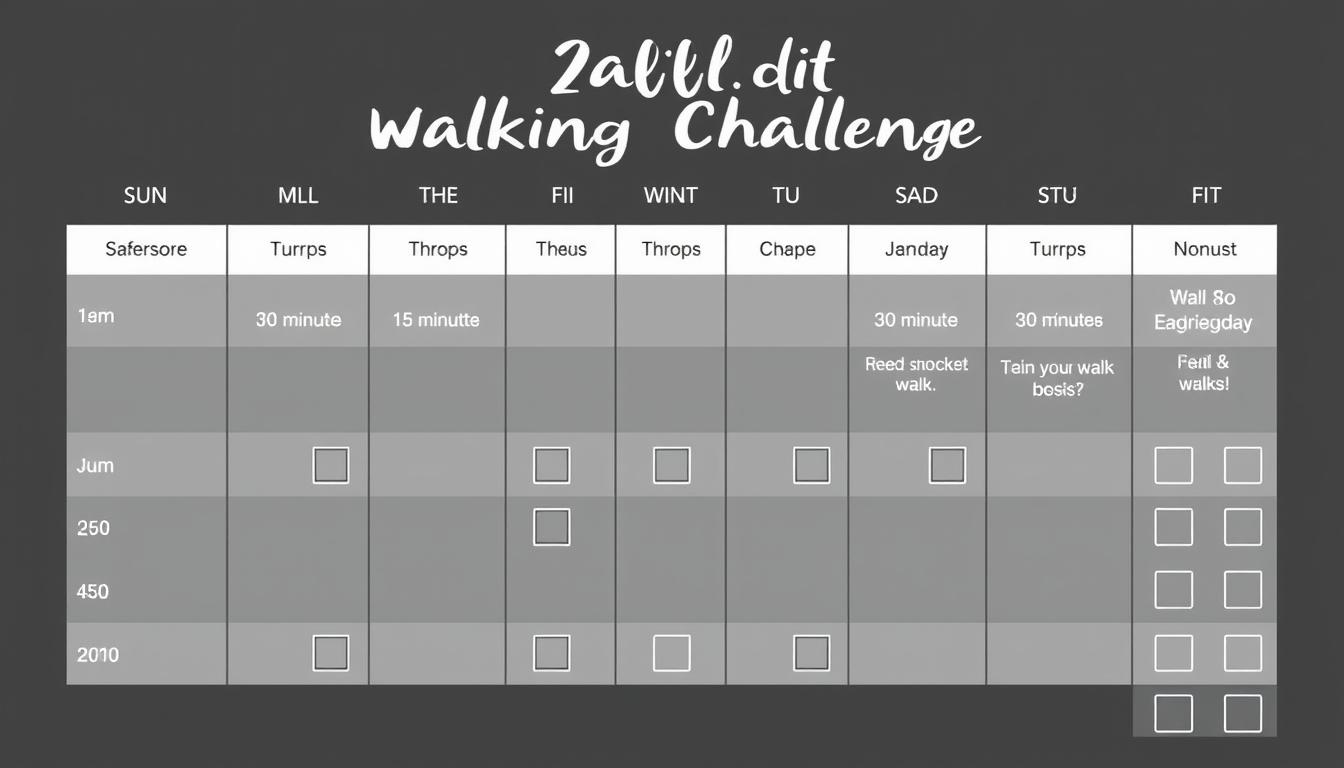When it comes to improving your health, the simplest solutions are often the most effective. A 30-minute daily walk might seem too basic to make a real difference, but science tells us otherwise. This accessible form of exercise requires no special equipment, can be done almost anywhere, and offers remarkable benefits for both body and mind. Whether you’re looking to boost your heart health, manage your weight, reduce stress, or simply add more movement to your day, a consistent walking routine could be the life-changing habit you’ve been searching for.
Physical Health Benefits of a 30-Minute Daily Walk
Walking might seem simple, but its impact on your physical health is profound. Research consistently shows that this accessible form of exercise delivers multiple benefits without the high impact or injury risks associated with more intense workouts.
Improved Heart Health
A regular walking routine significantly benefits your cardiovascular system. According to a study published in the European Journal of Epidemiology, just 30 minutes of normal walking five days a week is associated with a 19% reduction in heart disease risk. Walking helps lower blood pressure, improve cholesterol levels, and strengthen your heart muscle.
Weight Management and Metabolism
Walking for 30 minutes daily burns calories and helps maintain a healthy weight. While the exact calorie burn varies based on your weight and walking speed, a brisk 30-minute walk can burn between 150-200 calories. More importantly, regular walking prevents muscle loss, which is crucial for maintaining a healthy metabolism, especially as we age.
Reduced Risk of Chronic Diseases
A 2022 study published in Nature Medicine found that walking approximately 8,200 steps daily (achievable in about 30 minutes of brisk walking) effectively reduces the risk of several chronic conditions, including obesity, sleep apnea, gastroesophageal reflux disease, major depressive disorder, type 2 diabetes, and hypertension.
Stronger Bones and Joints
Contrary to what some might expect, walking is excellent for joint health. The Mayo Clinic reports that walking works directly on the bones in your legs, hips, and lower spine to slow density loss. Additionally, a 2022 study in PLOS ONE found that brisk walking for 30 minutes at least three times weekly helps prevent bone loss, particularly beneficial for women approaching menopause.
Mental Health and Cognitive Benefits
The benefits of a 30-minute daily walk extend well beyond physical health. Your brain and emotional wellbeing also receive significant boosts from this simple activity.
Stress Reduction
Walking reduces cortisol, the body’s primary stress hormone. A 2018 study published in Health Promotion Perspectives showed that just 10 minutes of walking can lower anxiety and depression levels. Imagine what a consistent 30-minute daily practice could do for your stress management.
Improved Mood and Mental Health
Walking stimulates the production of endorphins, your body’s natural mood elevators. Research published in The Journal of Mental Health and Physical Activity found that walking for at least 30 minutes, three to five times weekly, significantly reduced depressive symptoms. The effect is amplified when walking in natural settings.
Enhanced Cognitive Function
“Walking is man’s best medicine,” Hippocrates once said, and modern science confirms this ancient wisdom. Studies show that regular walking improves brain function, especially in older adults. The increased blood flow to the brain during walking enhances memory, attention, and decision-making abilities.
Better Sleep Quality
If you struggle with sleep, a daily walking routine might be your solution. Research published in Sleep found that regular moderate-intensity physical activity like walking improves both sleep quality and duration. Walking helps regulate your body’s natural sleep-wake cycle and reduces factors that interfere with good sleep, such as stress and anxiety.
How to Incorporate a 30-Minute Walk Into Your Daily Routine
Finding 30 minutes in your day might seem challenging, but with some creative planning, you can make walking a consistent part of your lifestyle.
Practical Strategies for Daily Walking
- Break it up: Try three 10-minute walks if you can’t find a continuous 30-minute block
- Schedule it: Block walking time in your calendar like any other important appointment
- Combine with tasks: Walk during phone calls or hold walking meetings
- Make it social: Walk with friends or family to combine exercise with quality time
- Morning routine: Start your day with a walk to boost energy and metabolism
- Lunch break: Use part of your lunch break for a refreshing midday walk
- Commute integration: Park farther away or get off public transport a stop early

Finding Your Ideal Walking Pace
The benefits of walking increase with intensity. A 2019 study in Mayo Clinic Proceedings suggests aiming for at least 4 miles per hour for optimal health benefits. However, the right pace depends on your fitness level and goals.
| Walking Pace | Speed (mph) | Benefits | Best For |
| Casual | 2-3 | Basic movement, gentle on joints | Beginners, recovery days, older adults |
| Brisk | 3-4 | Increased heart rate, moderate calorie burn | Most people, general fitness |
| Power | 4-5 | Significant cardiovascular workout, higher calorie burn | Fitness enthusiasts, weight management |
| Speed | 5+ | Maximum cardiovascular benefit, highest calorie burn | Athletic training, intensive workouts |
Choosing Your Walking Environment
Where you walk matters. A 2022 study in Molecular Psychiatry found that a 60-minute walk in nature decreases activity in brain regions involved in stress processing, while urban walks don’t provide the same benefit. When possible, seek out parks, trails, or green spaces for your walks.
Tracking Your Progress
Monitoring your walking routine helps maintain motivation and allows you to see improvements over time. Consider tracking:
What to Track
- Daily step count (aim for 7,000-10,000)
- Walking distance
- Time spent walking
- Average pace
- Calories burned
Tracking Tools
- Smartphone apps (free options available)
- Fitness trackers or smartwatches
- Simple pedometer
- Walking journal or calendar
- GPS watches for accurate distance

Overcoming Common Walking Barriers
Even with the best intentions, obstacles can derail your walking routine. Here’s how to overcome the most common barriers:
Weather Challenges
Don’t let weather conditions stop your walking streak. With some preparation and alternatives, you can maintain your routine year-round.
Cold/Rainy Weather Solutions
- Layer clothing appropriately
- Invest in waterproof gear
- Walk in covered areas (malls, indoor tracks)
- Use a treadmill
- Choose the least severe time of day
Hot Weather Solutions
- Walk early morning or evening
- Choose shaded routes
- Stay hydrated
- Wear light, breathable clothing
- Use indoor alternatives when extreme
Motivation Slumps
Everyone experiences motivation dips. These strategies can help you stay consistent even when enthusiasm wanes.
“The difference between a successful person and others is not a lack of strength, not a lack of knowledge, but rather a lack of will.” — Vince Lombardi
- Find a walking buddy for accountability
- Join walking groups or challenges
- Create a walking playlist that energizes you
- Set small, achievable goals with rewards
- Listen to podcasts or audiobooks while walking
- Vary your routes to prevent boredom
- Remember your “why” — the health benefits motivating you

Physical Limitations
Physical challenges don’t have to prevent you from enjoying the benefits of walking. Adaptations can make walking accessible for most people.
- Start with shorter walks and gradually increase duration
- Use walking aids if needed (canes, walking poles)
- Choose smooth, even surfaces
- Wear supportive, comfortable footwear
- Consider water walking for joint issues
- Consult healthcare providers for personalized advice
- Focus on consistency rather than intensity

Time Constraints
In our busy lives, finding 30 consecutive minutes can be challenging. These time-efficient approaches can help:
- Wake up 15 minutes earlier and walk before your day starts
- Split your walk into multiple shorter sessions
- Combine walking with other activities (walking meetings, phone calls)
- Replace some driving or public transport with walking
- Schedule walking as non-negotiable self-care time
- Use lunch breaks for quick walks
- Walk while waiting (airport, children’s activities)

Your 30-Day Walking Challenge
Ready to experience the transformative power of walking? A 30-day challenge is the perfect way to establish this healthy habit. Research shows it takes about 21 days to form a new habit, so 30 days gives you time to make walking part of your lifestyle.
How the Challenge Works
The concept is simple: commit to walking for 30 minutes every day for 30 consecutive days. You can adapt the intensity and timing to fit your schedule and fitness level, but consistency is key.
- Choose your starting date and mark it on your calendar
- Decide on your preferred walking time (morning, lunch, evening)
- Select several potential routes or walking locations
- Prepare appropriate footwear and weather gear
- Set up your tracking method (app, journal, calendar)
- Tell friends or family about your challenge for accountability
- Begin your 30-day journey to better health!
What to Expect
While individual experiences vary, here’s what many people notice during a 30-day walking challenge:
First Week
- Increased energy levels
- Improved mood
- Better sleep quality
- Potential muscle soreness
By Week Two
- Established routine forming
- Reduced stress levels
- Increased stamina
- Potential slight weight changes
By Week Three
- Walking becoming habitual
- Noticeable mood improvements
- Better digestion
- Improved focus and productivity
By Day 30
- Significant stamina improvements
- Potential measurable health changes
- Walking habit established
- Sense of accomplishment

“Walking is the best possible exercise. Habituate yourself to walk very far.” — Thomas Jefferson
Thomas Jefferson
Ready to Transform Your Health?
Commit to 30 minutes of walking every day for the next 30 days. No special equipment needed—just comfortable shoes and the decision to prioritize your health. Start today and experience the remarkable difference a simple daily walk can make.Join the 30-Day Walking Challenge
Conclusion: One Step at a Time
The power of a 30-minute daily walk lies in its simplicity and accessibility. Unlike complicated fitness regimens or expensive gym memberships, walking is available to almost everyone, anywhere, at any time. The scientific evidence is clear: this simple habit can significantly improve your physical health, enhance your mental wellbeing, and potentially add years to your life.
Remember that consistency matters more than perfection. There will be days when walking seems challenging or inconvenient, but each step you take is an investment in your health. Start where you are, use what you have, and do what you can. Your body and mind will thank you for it.
Whether you’re walking for weight management, stress relief, heart health, or simply to enjoy the outdoors, the journey of a thousand miles begins with a single step. Why not take that step today?


